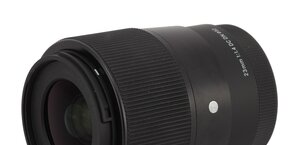Sony FE 16 mm f/1.8 G
10. Autofocus and focus breathing
Autofocus
The focusing mechanism of the Sony FE 16 mm f/1.8G is based on two linear XD motors. Because of them the autofocus of the lens, no matter whether you attach it to the Sony A7R IIIa or the newer Sony A7R V, is noiseless and very quick. Running through the whole range and confirming the focus takes about 0.3 of a second, an excellent result.The lens didn't have any accuracy problems, no matter whether we used it in the studio or outside. It is due to both good autofocus mechanism and a significant depth of field produced by the full frame 16 mm focal length. When it comes to the front or back focus tendencies we didn't notice any of these no matter what camera body we employed.
| A7R IIIa, f/1.8 |
 |
| A7R V, f/1.8 |
 |
Please Support UsIf you enjoy our reviews and articles, and you want us to continue our work please, support our website by donating through PayPal. The funds are going to be used for paying our editorial team, renting servers, and equipping our testing studio; only that way we will be able to continue providing you interesting content for free. |
- - - - - - - - - - - - - - - - - - - - - - - - - - - - - - - - - - - - - - - - - - - - - - - -
Focus breathing
Focus breathing tests show reframing images as you oversharp them. We conduct the test by manually passing from the minimum focusing distance to infinity with the aperture stopped down; then we check how the field of view of the lens changed as a result.A frame change ranging from 0 to 5% we consider to be low. Between 5 and 10% you can speak about medium levels. Usually such values constitute also the maximum efficiency level of any breathing compensation algorithms, present in some bodies. Between 10 and 15% focus breathing is high, above 15% its level can be called very high.
The test video of the Sony lens is presented below:






